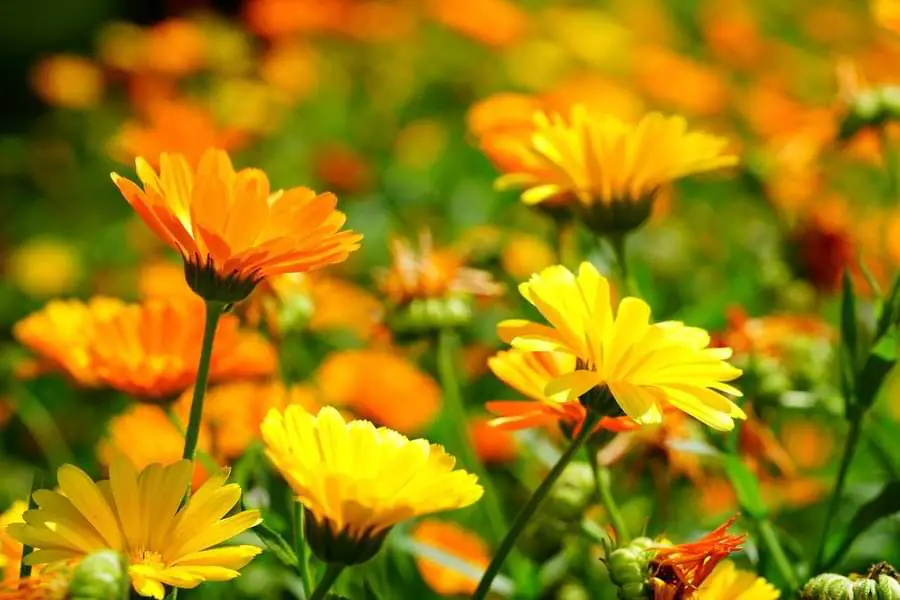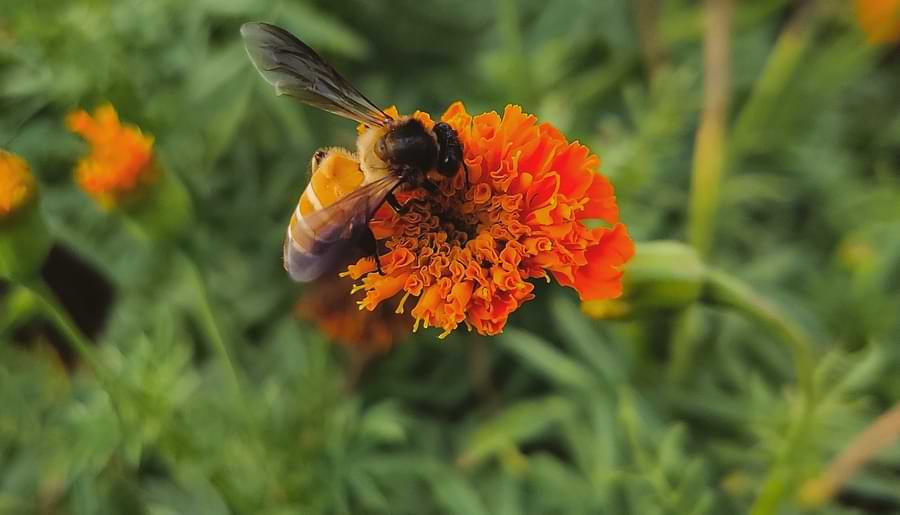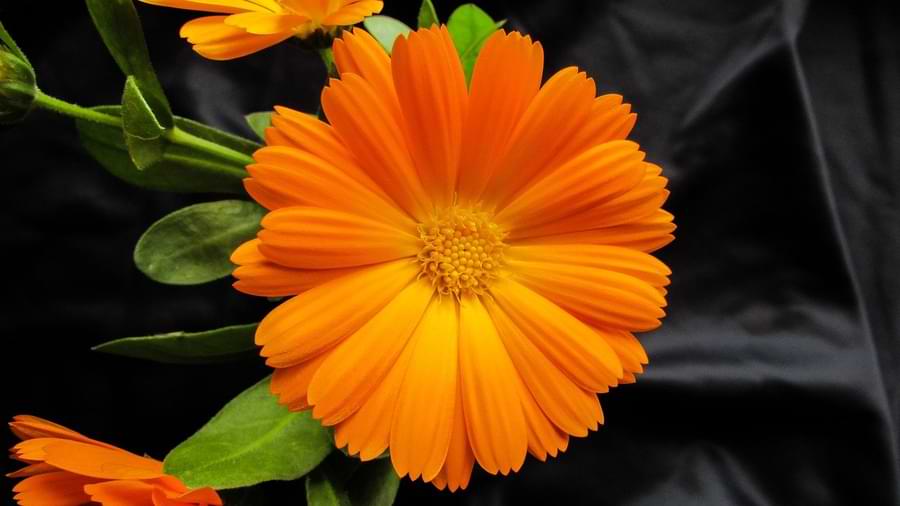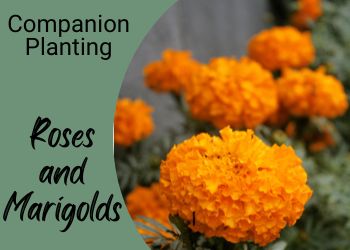Marigolds are ultimate companions to the roses, and besides beauty, they come up with other benefits and share some of the common needs. So here I’ll provide more information on roses and marigolds planted together.
Here’s a summary first, then we’ll head into more details…
Marigolds and roses work well together. Both like 6+ hours of direct sun, well-drained soil of pH 6.5 – 7.0, and share most growing zones. Marigolds also help roses by deterring pests like aphids, and even nematodes, and they won’t overshadow the height of roses. Plant 2-3 feet away for best effect.
Ok, let’s move on to looking at roses and marigolds as companion plants.
Roses and Marigolds
That’s the short summary to give you a flavor of roses and marigolds together. But there’s more to discover about these plants together, so I’ll dive into this and expand on the topic.

Comparative height and space
Height and space measurements are really important to ensure the proper development of the plant and to maintain the floral ambiance of the garden.
In contrast to roses, marigolds normally grow from 6 inches to 24 inches in height and don’t get longer than roses in any case.
On the other hand, they ideally need 1–2 feet of space around themselves so they can stretch easily. Similarly, roses ideally like 2-3 feet of space in which to spread.
Therefore it’s good to keep both of them at least 1-2 feet apart where they can then be given their own space.
In fairness, I’ve planted marigolds with other plants closer than this at around 12-18 inches, with perfectly fine results. So I guess you will find exactly what works in your garden.
Check out my whole new list of rose companion plants.
Sun and soil
Sharing similar requirements to roses, marigolds love a full shining sun for 6 or more hours daily as do roses also need 6-8 hours of direct sunlight.
Marigolds can also tolerate partial shade for 2-3 hours daily if adequate sunlight is available for the rest of the day.
For soil, the rose-marigold pair prefer the fertile loam soil and both of them can bear a slight variation in the pH towards the acidic side.
The ideal pH for a marigold to bloom rapidly lies between 6.2 to 7, which is very similar to that of roses i.e. 6.5 to 7.
Both roses and marigolds love well-drained soil, and like roses, marigolds do not like heavy clays where proper irrigation is not possible.
I wrote more about the best loamy soil for roses here.
Pests and pollinators
One of the best contributions of marigolds to the roses is that it deters a lot of harmful insects and pests from the garden and on the other hand their slimy leaves also attract a lot of bees, birds, and butterflies.
You’ve probably heard before how beneficial marigolds can be to your plants and flowers. And it’s the same with roses.
Marigolds just seem to be every plant’s best friend! And they are certainly a rose’s best friend!
Hornworms and root-knot nematodes which cause almost 5% crop loss globally every year can be repelled easily from the garden beds by planting multiple species of marigolds.

Growing zones
Marigolds are found in most of the USDA hardiness zones except a few. They grow under most zone conditions from zone 2 to 11. Whereas the temperatures of zone 1, 12, and 13 are not suitable for marigolds.
That is why marigolds can grow easily with almost all species of roses.
However, two main types of marigolds are mostly paired with roses in most home garden settings, partly due to their zoning flexibility.
French marigold (tagetes patula)
common in all growing zones 2 – 11 along with its cultivars.
African marigold (tagetes erecta)
common in all growing zones 2 – 11.

Plant type and colors available
Now let’s talk about the color options and plant types available for both of them – roses and marigolds.
Marigolds are mostly annuals and most of them remain vegetative for less than 3 months.
They are available in mostly citrus hues. Like orange, yellow, deep orange, and golden yellow. Some of them have bi-colors as well. Like, red – gold and red – yellow.
That is why the contrasting red and citrus tinctures of both the plants can add life to your flower bed and can enlighten the aesthetic sense of having a full and blooming backyard.
Some marigolds appear to be perennials because of their self-seeding habit but they do not come back after every season normally. However, roses are perennials.

Roses and Marigolds Pros and Cons
Here’s a quick list of the pros and cons of companion planting marigolds alongside roses:
Pros
- Marigolds are known to repel pests
- Mostly smaller plants
- Like direct sunlight
- Attracts Pollinators
- Complimentary colors
Cons
- Annuals so will need to reseed
Roses and Marigolds ~ More roses help 🌹
I hope this has helped you to understand more about planting roses and marigolds together.
There are other companion plants you can look at to put around your roses that will help them in various ways, whether it’s to deter pests or simply for complementary colors. So check the companion planting article out here.
So be sure to check out my other rose articles, and also check out my tools and resources page.
Happy rose growing!

Hi, I’m Michael. My passion for roses was sparked a few years ago after visiting a dedicated community rose garden. So Rosehow.com represents my take, my learnings, and my help for anyone looking to grow, be proud of, and harvest roses.

